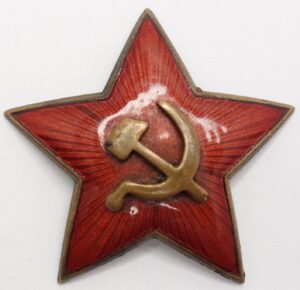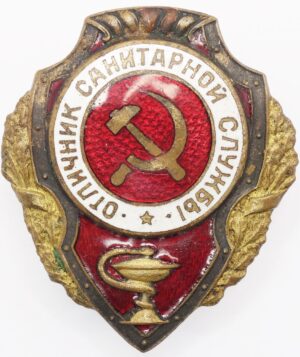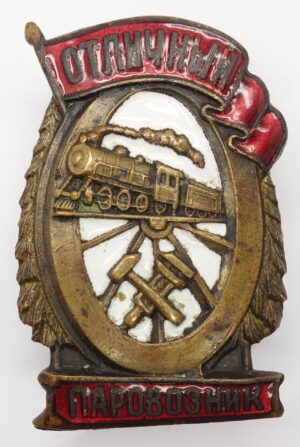Description
Society of Former Political Prisoners and Exiled Settlers Badge
Made of silver and and enamels. Measures 17.82 mm in height without the flagpole, 31.66 mm in width and weighs 5.6 grams without its screwplate.
In nice, above average condition. Its details are all well defined and the badge shows few dings and scratches. The red enamels show several contact marks and some minor chipping on the top left side but without repairs. The blue enamels are problem free. Its screw has not been shortened and its screwplate is time period but nor original to the badge. The fragile lower part of the flagpole was broken off at some point and was reattached (still the same original part). It stays in place as it is but we can not guarantee it will not break off again. Therefor we consider it a bonus and priced the badge as if it was without the lower part of the flagpole.
Extremely rare badge and very collectible!
Awarded to political convicts and exiled settlers of the era of struggle against the tsarist autocracy
The society was organized on the initiative of F. E. Dzerzhinsky, J. E. Rudzutak, E. M. Yaroslavsky and others. The opening took place in Moscow in the House of Unions on March 21, 1921.
In 1921 the society had 200 members, in 1931 – 2759. Among them were prominent participants in the revolutionary movement: V.D. Vilensky (Sibiryakov), V.N. Figner, L. G. Deich, N.S. Tyutchev, M.F. Frolenko, A.V. Yakimova-Dikovskaya, A.V. Pribylev, A.P. Pribyleva-Korba, F.N. Petrov, V.A. Bystryansky, N.A. Skrypnik, I.A. Teodorovich, V.A. Zhdanov and others. The Society was headed by the Council. Since 1924 it has been transformed into an all-Union organization; in 1928 it had over 50 branches. Its members delivered reports and lectures to workers, students, and Red Army men. In 1924, 1925, 1928, 1931, all-Union congresses of the society were held.
In 1926 the society founded a museum with a library and an archive. Together with the Society of Old Bolsheviks, the Society of Former Political Prisoners and Exiled Settlers initiated the creation of the MOPR (1922).
Just before the disbandment in Leningrad, the famous House of Political Prisoners was built for the society on Revolution Square.
It ceased to exist in 1935. Many members of the society were repressed.
Please contact us with questions





